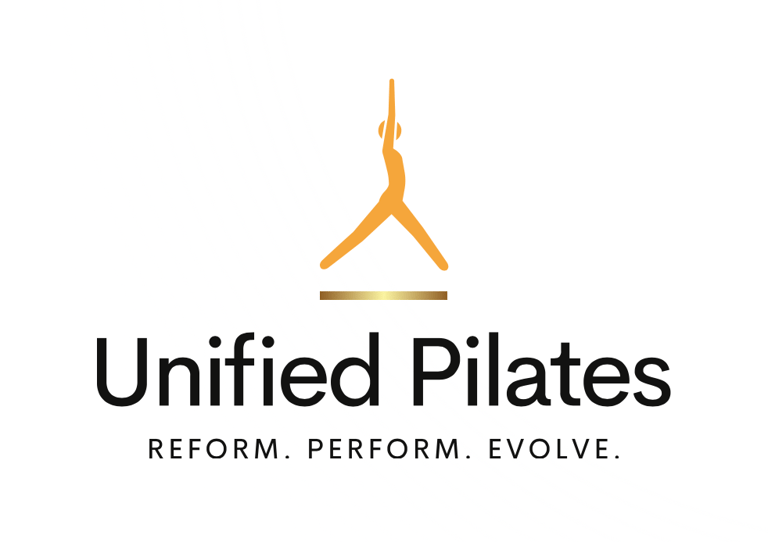Boosting Engagement and Productivity Through Wellness
Discover how Pilates in corporate wellness programs boosts employee engagement, productivity, and well-being while reducing absenteeism and healthcare costs.
CORPORATE WELLNESS
2/7/20257 min read


This blog post will explore four case studies showcasing the impact of wellness programs, such as Pilates, on employee engagement, productivity, and overall well-being. It will consider aspects like employee morale, cost effectiveness, and the potential for lower absenteeism and healthcare-related expenses in corporate environments. If you're looking for ways to implement programs that not only improve employee job satisfaction but also contribute to retaining top talent, wellness initiatives—such as Pilates—might be worth considering.
The Irish Employment Landscape looks to enhance Employee Engagement and Culture
CIPD’s HR practices in Ireland 2023 report suggests that the trend towards hybrid/remote working will continue to grow. Their survey indicated that currently, there is a prevalence of hybrid working, with 42% of organizations reporting that over half their workforce worked a hybrid model, while only 12% of companies said that the majority of employees were working completely remotely. This report also highlights that the most common pattern of hybrid working is for employees to be on site two or three days a week. (HR practices report, 2023)
In 2023, corporate environments faced significant challenges in maintaining employee engagement, team connection, and company culture. Surveys revealed that 46% of organizations struggle with employee engagement and 45% with company culture. Moreover, 28% of companies identified mental well-being and communication as critical concerns. With its holistic approach, Pilates and other wellness programs help address these challenges by fostering team unity, improving mental health, and contributing to company culture.
It’s no surprise that 44% of HR leaders focus on employee engagement initiatives to enhance productivity and job satisfaction. Exercise programs, such as Pilates, can be a powerful tool to address these challenges by fostering unity, promoting collaboration, and strengthening company culture. Additionally, the mental well-being benefits from breathing techniques and focused movements are notable, helping reduce stress and boost overall morale. (CIPD) (Deloitte United States)(CIPD) (Deloitte United States).
Key Learnings from Case Studies
Case studies highlight that wellness programs, including movement classes like Pilates, have been linked to reduced stress levels, better physical health, and mental well-being, leading to higher morale and job satisfaction.
Increased participation in wellness programs translates to a greater sense of being valued by the employer, and overall higher levels of engagement and productivity. These outcomes demonstrate the positive impact of corporate wellness programs on employee morale and engagement, supporting the case for including such programs in corporate wellness strategies.
A key consideration in implementing wellness programs is how to encourage ongoing participation. In some cases, companies may incentivize these programs, enhancing engagement and helping build a shared sense of inclusion and company culture.
Some organizations have done exactly this, they have put structured initiatives in place that offer employees access to comprehensive health care and address a broad spectrum of health needs, from chronic disease management to preventive care and mental health support. This holistic approach helps in addressing various aspects of employee health, ultimately leading to reduced healthcare costs and improved productivity.
Promoting Behavioral Changes is another strategy that includes not just preventative health care such as nutritional consultations, stress management, movement and exercise classes such as Yoga and Pilates.These focus on promoting the benefits of achieving lasting behavioral changes that positively impact employees' health.
The Financial Benefits for Organisations
The study "Workplace Wellness Programs Can Generate Savings" by Katherine Baicker, David Cutler, and Zirui Song, published in 2010, highlights the general benefits of physical activity within workplace wellness programs. They found that for every dollar spent on wellness programs—including exercise and movement activities like Pilates—there was a reduction of $3.27 in medical costs and $2.73 in absenteeism costs. This suggests the economic potential of incorporating wellness initiatives like Pilates in the workplace.
Overall, they noted improved health outcomes in general, such as lower rates of chronic disease and improved physical health. There is further evidence that suggests healthier employees tend to be more productive.
The reduction in absenteeism and the overall improvement in health can lead to a more engaged and efficient workforce. The findings highlight the economic value of investing in employee wellness programs. By reducing healthcare costs and improving employee productivity, these programs offer a compelling case for broader implementation in corporate settings (Harvard Dash) (Harvard Dash) (Harvard Scholars) (IDEAS/RePEc).
CASE STUDY 1:
Aetna's Wellness Program
Aetna, a health insurance company, implemented a comprehensive wellness program that included yoga, Pilates, and other exercise classes.
Key Outcomes:
Cost Savings: Aetna’s wellness program, which included Pilates and other movement classes, was linked to a reduction in healthcare costs of around $2,000 per employee annually.
Improved Productivity: 28% of employees reported reduced stress levels.
Employee Engagement: Employee participation in wellness programs increased, contributing to higher overall job satisfaction and engagement. Employees who engaged in regular wellness activities were more focused, energetic, and able to perform their tasks efficiently.
Holistic Wellness Approach: The program included not just physical activities but also mental health resources, financial wellness programs, and social connectivity initiatives. This holistic approach ensured that multiple aspects of employee well-being were addressed, leading to a more balanced and healthy workforce. Source: Aetna's Wellness Initiatives
CASE STUDY 2:
Johnson & Johnson
Johnson & Johnson's wellness program, known as the "Culture of Health," aimed to create the healthiest workforce globally. The company implemented a long-term wellness program that included various physical activities like Pilates and other exercise classes.
The outcomes of this initiative were significant:
Healthcare Costs: The company saved $250 million over ten years.
Health Outcomes: A 34% decrease in employees with high blood pressure.
Absenteeism: Absenteeism reduced by 50%, enhancing productivity and lowering costs associated with lost workdays.
Employee Morale: The company observed improved morale among employees, attributed to better physical and mental health due to the wellness program.
Engagement: Employee engagement levels increased as a result of the program. Higher engagement was linked to the comprehensive support provided for employees' health and well-being.
By 2015, 90% of J&J’s 128,000 employees participated in these wellness programs, with 80% having a "low risk" health profile. Source: Harvard Business Review on Johnson & Johnson
CASE STUDY 3:
SAP America
SAP America has implemented a comprehensive wellness program that includes fitness classes such as Pilates and yoga, aiming to promote employee well-being. Here are the key outcomes of their initiative:
Cost Savings: SAP America achieved a 4:1 return on investment (ROI) from their wellness programs. This significant cost-saving is attributed to reduced healthcare costs and increased employee productivity.
Health Improvements: The program led to substantial improvements in employee health metrics. Participants reported reduced stress levels and better overall fitness. These health benefits are supported by various wellness activities, including fitness classes, which contribute to a healthier and more engaged workforce.
Productivity Gains: The wellness program at SAP America has resulted in increased productivity and decreased absenteeism. Employees who participate in the program are more motivated and efficient, leading to a more productive workforce.
SAP America’s focus on holistic well-being, encompassing physical, emotional, social, and financial health, has positioned them as a leader in corporate wellness. The company continuously adapts and expands its programs to meet the evolving needs of its workforce, particularly in the context of remote work and the challenges posed by the COVID-19 pandemic (SAP) (SAP News Center) (SAP North America Benefits).
CASE STUDY 4:
CPL Ireland
One recent case study from Ireland highlights the success of a wellness program implemented by the company CPL, a global workforce solutions firm. CPL introduced a comprehensive wellness program that included movement classes such as yoga, Pilates, and strength training. This initiative was part of their broader strategy to enhance employee well-being and productivity.
Key Outcomes:
Healthcare Utilization: The program led to a notable 25% reduction in healthcare utilization, indicating that employees required fewer medical interventions and hospital visits due to improved overall health.
Employee Health: Participants in the program showed significant improvements in physical health metrics, such as lower body mass index (BMI) and reduced cholesterol levels.
Engagement and Satisfaction: The wellness program substantially increased employee engagement and satisfaction. Many employees reported feeling more valued and motivated, contributing to a more positive and productive workplace culture.
Absenteeism: The company observed a 40% reduction in absenteeism, demonstrating that healthier employees were less likely to miss work due to illness, thereby enhancing productivity and reducing costs related to lost workdays (Wellness at Work) (Corporate Wellness Mag) (Corporate Wellness Mag).
CPL's success mirrors the outcomes seen in similar wellness programs globally, underscoring the effectiveness of incorporating movement and fitness classes into corporate well-being strategies. These programs not only improve physical health but also boost morale and create a more engaged and productive workforce.
Implementing a Wellness program
The case studies of Aetna, Johnson & Johnson, MD Anderson Cancer Center, and SAP America demonstrate that integrating movement and exercise classes like Pilates into corporate wellness programs leads to significant health benefits, cost savings, and improvements in employee engagement and productivity. Furthermore, we have seen that hybrid working poses challenges for organizations to engage employees and foster positive cultures. With it's many benefits, Corporate Pilates might just be the solution that can address many of these challenges.
Based on these case studies, companies looking to implement or enhance their wellness programs should consider:
Incorporating a Variety of Exercise Options: Offering a diverse selection of fitness programs, such as Pilates, yoga, and other classes, to accommodate different employee preferences.
Providing Financial Incentives: Motivating participation by offering rewards or incentives.
Focusing on Holistic Health: Addressing both physical and mental health needs to maximize wellness benefits.
Monitoring and Evaluating: Continuously assessing the program’s impact on health outcomes, cost savings, and employee satisfaction, to make data-driven improvements.
Case studies from Aetna, Johnson & Johnson, SAP America, and other organizations demonstrate that integrating wellness programs, including Pilates and other movement classes, into corporate wellness strategies can lead to significant health benefits, cost savings, and improvements in employee engagement and productivity.
About your Author:
Alice is a seasoned Pilates instructor with 20 years of experience in the fitness and wellness industry in Ireland. Certified by Balanced Body as a Comprehensive Pilates Instructor, she also holds qualifications as an NTC Personal Trainer and Exercise and Health Coach. Based in Galway, Alice teaches Reformer and Mat Pilates classes, and offers private equipment-based sessions using the Reformer, Cadillac, and other apparatus. She works with a wide range of clients, tailoring programs to individual needs — from office workers and recreational athletes. Before specializing in Pilates, Alice spent over a decade managing fitness facilities, giving her a broad understanding of both client care and the evolving fitness industry. Today, she brings that expertise to her teaching — offering a thoughtful, structured, and progressive approach to Pilates that meets clients exactly where they are.
Alice is passionate about helping people move well and move smart. Whether you're practicing at home or in the studio, her goal is to help you build a strong foundation, avoid compensation and overload, and experience how Pilates can truly support your everyday life.
Disclaimer:
The content in this blog is for informational purposes only and is not a substitute for professional medical advice, diagnosis, or treatment. Always consult a qualified healthcare provider for guidance, especially if you have medical concerns or pre-existing conditions. While my classes are tailored to individual goals, life stages, and fitness levels, they are not intended for rehabilitation or medical treatment.
Unified Pilates
Move with purpose and strength for the life you choose.
© 2025 Unified Pilates. All rights reserved.
